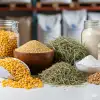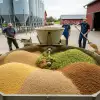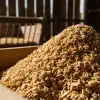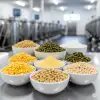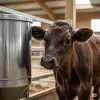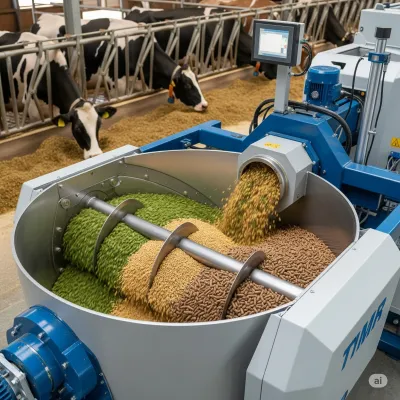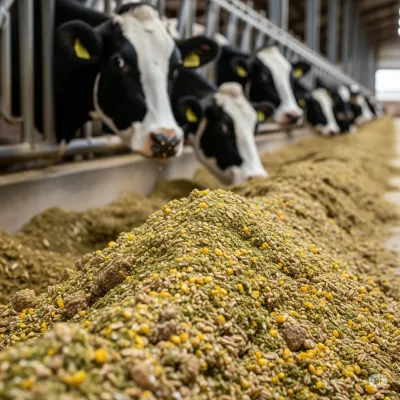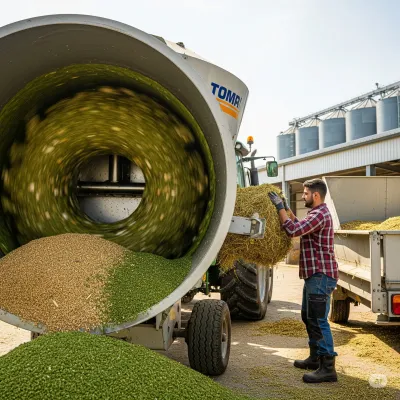For Beginners: Forage and Concentrate Ratio – Key to Proper Animal Nutrition
For beginners in animal husbandry, understanding the importance of forage and concentrate feed ratios. Learn proper feeding strategies and example feed raw materials for healthy animals and high yield.

For Beginners: Forage and Concentrate Ratio – Key to Proper Animal Nutrition
For those new to animal husbandry, feeding can be one of the most complex topics. Especially understanding the concepts of "forage" and "concentrate feed" and their correct ratios forms the basis for having healthy and productive animals. So, what are forage and concentrate feed, and how should we feed our animals?
What is Forage?
Forage refers to fibrous feeds that are crucial for animal digestive systems. These feeds, generally bulky and slower to digest, ensure the healthy functioning of the rumen in ruminants (such as cattle, sheep, and goats). Forages help animals feel full and are vital for the regular operation of their digestive systems.
Key forage sources include:
- Grass: Dried or fresh grasses grown in pastures or fields.
- Straw: Dry stalks remaining after grain harvest. It has low nutritional value but is a good source of fiber.
- Silage: A high-nutritional-value forage obtained by fermenting green fodder in an anaerobic environment (such as corn silage, alfalfa silage).
- Alfalfa (Yonca): A protein-rich, perennial legume forage.
- Vetch (Fiğ): A protein-rich forage plant, often sown with cereals.
What is Concentrate Feed?
Concentrate feeds, on the other hand, are less bulky but more dense in energy, protein, vitamins, and minerals compared to forages. They are used to meet specific needs such as rapid growth, milk production, meat yield, or improved reproductive performance. Concentrate feeds typically consist of grains, oilseed meals, and some added supplements.
Key concentrate feed sources include:
- Grains: Energy-rich sources like corn, barley, wheat, and oats.
- Oilseed Meals: Protein-rich sources such as sunflower meal, soybean meal, and cottonseed meal.
- Legumes: Feeds containing protein and energy, such as lentils and chickpeas.
- Compound Feeds: Commercial feeds, usually in pellet or mash form, prepared by mixing various forages and concentrates in specific proportions according to the animal's needs.
Why is the Right Ratio So Important?
In animal nutrition, the ratio between forage and concentrate feed must be carefully adjusted according to the animal's species, age, physiological state (growth, milk yield, pregnancy, etc.), and production goal. Correctly determining this ratio is critical for the animal's health, digestive system functions, and overall performance.
- Forage Deficiency: Insufficient forage intake can lead to digestive problems like ruminal acidosis, especially in ruminants. This reduces the animal's appetite, causes digestive disorders, and leads to long-term performance losses.
- Concentrate Feed Deficiency: Insufficient concentrate feed means the animal's energy and protein needs are not met. This leads to issues such as stunted growth, low milk yield, and poor reproductive performance.
- Excessive Concentrate Feed: Excessive concentrate feed consumption can also lead to digestive problems, particularly disruption of the rumen flora and metabolic diseases. It also increases costs.
How to Determine the Forage / Concentrate Feed Ratio?
As a general rule, the proportion of forage in ruminant rations should be higher. For instance, in dairy cows, this ratio can vary depending on the lactation period and yield level. While a forage-heavy ration is more suitable for a dry cow, a high-yielding dairy cow may require more concentrate feed.
Here are some examples:
- Growing Calves: They need a balanced forage and concentrate ratio for high growth rate and muscle development. Starting with more forage and gradually increasing the concentrate ratio as they age can be beneficial.
- Dairy Cows: As milk yield increases, so does the cow's energy and protein requirement. In this case, the amount of concentrate feed in the ration is increased, while paying attention to the quality of forage.
- Sheep and Goats: Generally, they may not need as much concentrate feed as cattle, but concentrate supplementation is important during pregnancy and lactation.
Since each animal's needs are different, it is best to seek support from a veterinarian or animal nutrition specialist to determine the most accurate ratio. They can create a personalized feeding plan for you, considering your animals' age, species, health status, and production goals.
Example Raw Materials and Nutrient Values
The table below shows the general nutrient values of some common forage and concentrate feed raw materials. These values may vary depending on growing conditions and harvest time.
| Feed Type | Example Raw Material | Dry Matter (DM) % | Crude Protein (CP) % | Metabolizable Energy (ME) Kcal/kg (approx.) |
|---|---|---|---|---|
| Forages | Good Quality Dry Hay | 90 | 8-12 | 1800-2200 |
| Corn Silage | 30-35 | 7-9 | 2300-2600 | |
| Alfalfa Hay | 90 | 16-20 | 2000-2400 | |
| Wheat Straw | 90 | 3-5 | 1400-1600 | |
| Concentrates | Barley | 88 | 10-12 | 2900-3100 |
| Corn | 88 | 8-10 | 3200-3400 | |
| Soybean Meal | 90 | 44-48 | 2800-3000 | |
| Sunflower Meal | 90 | 32-36 | 2400-2600 |
Conclusion
The forage and concentrate feed ratio is the cornerstone of animal nutrition. Understanding and applying these ratios correctly directly impacts the health, welfare, and productivity of your animals. Remember that every animal has individual needs, and seeking help from an expert is always the smartest approach for the best results. By feeding your animals correctly, you can achieve success in your animal husbandry adventure!
